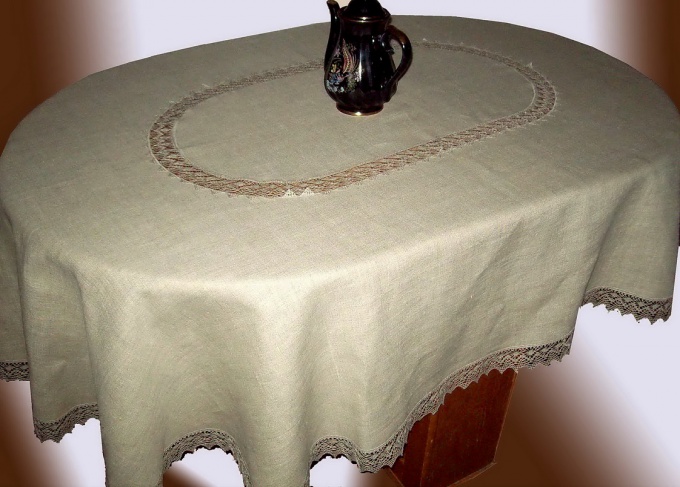You will need
- cloth;
- - scissors;
- - threads;
- - needle;
- - sewing machine;
- - the range;
- - tracing;
- pencil.
Instruction
1
Lay the tracing paper on the oval table top, lock it, put it on top of the cargo, and pencil outline the shape of the countertop.
2
Remove the tracing paper from the table, neatly in pencil to cut out with scissors the resulting oval. Now you have the future pattern of the tablecloth.
3
Lay your chosen fabric on a wide table or a clean floor. The material should be clean and ironed that the folds did not affect the shape of the workpiece.
4
Place the template on the fabric and press it any load, so it did not move during further work.
5
Measure with a ruler the height of the table with an oval top, which is intended tablecloth.
6
Add each side from patterns ¾ the height of the table, make notes on an appropriate distance from the patterns and then trace the outline with a pencil on fabric.
7
Remove the tissue pattern, cut with scissors to the pencil the contour of the blank future of the tablecloth.
8
Tuck the edge of the workpiece inside once, and secure with a basting (sew by hand).
9
Tuck the trained region once inside and pristrochite it on the sewing machine.
10
Remove the finished cloths, thread, a trained hand.
Note
In advance estimate the amount of fabric needed for sewing tablecloths. Make sure that the fabric was no visible damage and wrinkles before they start work. Pick up a thread, combined with your chosen fabric.
Useful advice
When cutting fabric using patterns for better fixing, you can use the pins. It is also convenient to use safety pins when basting the edges by hand. In the manufacture of moulds and blanks tablecloth, try to use material economically: draw closer to the corner of a piece of tracing paper or tissue and not in the center, below the size of the main piece left is more than the total size of the resulting scraps. The work of processing the edges of the tablecloth can be made easier by sewing to the edge of the pretty fringe or ribbon. Cutting fabric is easiest if you rest the scissors on the surface on which it rests.
